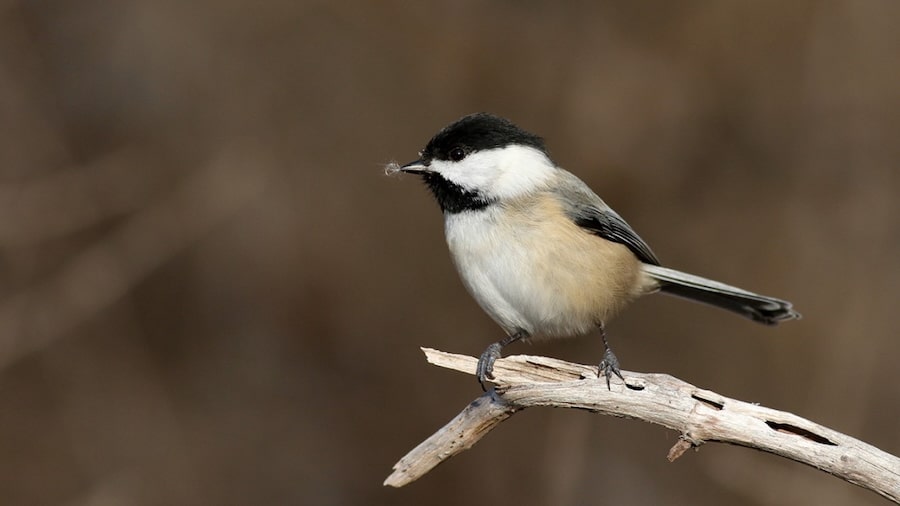This post was originally published on Eco Watch
North American bird populations are plummeting, especially in drylands, grasslands and the Arctic where they have historically been most abundant, new research has found.
The analysis of almost 500 species of North American birds indicates that three out of four species are suffering declines across their ranges, with two in three shrinking significantly.
“We’re not just seeing small shifts happening — we’re documenting populations declining where they were once really abundant,” said lead author of the paper Alison Johnston, an ecological statistician who was formerly with the Cornell Lab of Ornithology and is now director of the Centre for Research into Ecological & Environmental Modelling at Scotland’s University of St. Andrews, as the Cornell Chronicle reported. “Locations that once provided ideal habitat and climate for these species are no longer suitable. I think this is indicative of more major shifts happening for the nature that’s around us.”
Of the species the researchers examined, 83 percent were losing more of their populations in places they were most plentiful.
The team at the Lab of Ornithology analyzed birdwatchers’ observations of 36 million birds shared in the lab’s eBird program, as well as environmental variables derived from satellite images of 495 North American bird species from 2007 to 2021.
“We’ve known for several years that a lot of bird species in North America have been declining. With this study, we were aiming to understand in much finer spatial resolution where birds were declining and where they might be increasing. Rather than having a range-wide trend to see if a species is going up or down, we want to know where it is going up and down,” Johnston said, as reported by The Guardian.
The stark findings followed the recent United States’ State of the Birds 2025 report, which found declines in bird species across nearly every biome in the country, the Cornell Chronicle reported.
The research team said additional studies would be necessary to explain the causes of the declines, with populations falling by over 10 percent annually in some areas. Habitat changes and global heating were posited as the main theoretical causes, but the researchers ultimately didn’t know, Johnston said.
The research featured recent trends in bird populations at scales of 16.78 square miles — the smallest ever attempted for a study covering such a big geographic area.
“This is the first time we’ve had fine scale information on population changes across such broad spatial extents and across entire ranges of species. And that provides us a better lens to understand the changes that are happening with bird populations,” said Amanda Rodewald, a professor in the Department of Natural Resources at Cornell, as well as the faculty director of the Center for Avian Population Studies at the Cornell Lab of Ornithology, as reported by the Cornell Chronicle.
Earlier continental and national monitoring programs could only estimate population trends across entire regions, provinces, states or ranges. However, with the accumulation of large amounts of data and advances in machine learning, researchers are now able to examine how well species are faring in areas roughly the size of New York City.
“Results revealed high and previously undetected spatial heterogeneity in trends; although 75% of species were declining, 97% of species showed separate areas of significantly increasing and decreasing populations,” the authors wrote in the findings. “These high-resolution trends improve our ability to understand population dynamics, prioritize recovery efforts, and guide conservation at a time when action is urgently needed.”
Some bird species appeared to be doing well within a region or across their range, but were struggling in specific locations.
“The super interesting thing is, for almost all species, we found areas of population increases and decreases. This spatial variation in population trends has been previously invisible when looking at broader regional summaries,” Johnston said. “Areas where species are increasing where they’re at low abundance may be places where conservation has been successful and populations are recovering, or they may point to locations where there may be potential for recovery.”
The detailed mapping of population shifts will assist policymakers and conservation organizations in better targeting efforts to safeguard declining bird species, which the authors said is desperately needed to help reverse falling population trends.
A black-capped chickadee. Jay McGowan / Cornell Lab of Ornithology
“It’s this small-scale information across broad geographies that has been lacking, and it’s exactly what we need to make smart conservation decisions,” Rodewald said, as the Cornell Chronicle reported. “These data products give us a new lens to detect and diagnose population declines and to respond to them in a way that’s strategic, precise and flexible. That’s a game changer for conservation.”
The research also demonstrated the importance of citizen scientists.
“Because of the volunteers that engage in programs like eBird, because of their enthusiasm and engagement, and generosity of time, we now know more about bird populations and more about the environment than we ever have before,” Rodewald added.
The study, “North American bird declines are greatest where species are most abundant,” was published in the journal Science.
“Without the massive amount of data available from eBird, we would not have been able to complete this study,” said Daniel Fink, a statistician and senior research associate with the Cornell Lab of Ornithology.
The post North American Bird Populations Are Collapsing in Places They Once Thrived: Study appeared first on EcoWatch.





0 Comments